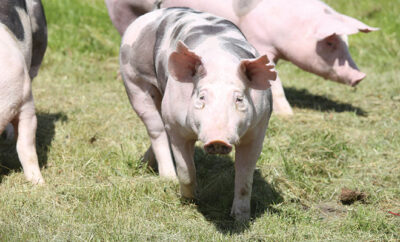
Good Food for Good Skin
“Beauty is only skin deep.” Superficial beauty is not a yardstick of character or integrity. But your skin does have a purpose that goes far beyond being pretty.
You probably know that skin is the largest organ in the human body. Weighing in at about eight pounds, about 20 square feet of skin is all that stands between our bodies and the elements. This protective layer serves as a barrier to unseen germs and bacteria. Your skin allows your brain to interpret the outside world through a network of nerve endings, and it helps regulate body temperature.
These unique properties mean that skin demands your attention. Indeed, the skincare industry is booming. Americans spend about $2 billion each year on products to protect and maintain skin. But our focus today is not just skin deep. We’re looking at what foods to consume that will best nourish your body and skin, from the inside out.
The most important thing your body and skin needs is water, which makes up about 60 percent of your skin. Drinking other liquids isn’t the same. Sugary sodas or fruit juices have inflammatory properties; alcohol or coffee can dehydrate the body. Staying well hydrated also benefits muscles, joints, brain function and immune system. If drinking water is challenging for you, try adding flavor to it by steeping a pitcher of water with berries, sliced citrus fruit or cucumbers in your refrigerator.
At the grocery, shop for foods that give your skin a boost. Collagen, a protein that gives skin structure, declines with age, sunlight, smoking and some medical conditions. Foods that help your body produce collagen include those rich in omega-3 fatty acids, such as salmon, avocados, walnuts and flax seed. Try using ground flax seed in smoothies or sprinkle it on cereal or salads.
You’ve heard about the benefits of eating food in a rainbow of colors. This ensures your diet has the nutrients, vitamins and compounds found in a variety of healthy fruit and vegetables. That rainbow is also crucial to the health of your skin, and here’s why. Red fruits and vegetables have lycopene, which offers protection against sunburn. They also provide vitamin C, which assists in production of collagen. Some of the best sources of vitamin C are found in vegetables such as Brussels sprouts, broccoli, cauliflower and herbs such as thyme and parsley. Eating plenty of herbs is beneficial. Studies show that a diet combining four or more herbs (think parsley, sage, rosemary and thyme) can help reduce the incidence of melanoma.
Citrus fruits and berries are high in vitamin C and help the body produce amino acids such as lysine and proline, also needed to produce collagen. Vitamin A helps the body synthesize collagen, and it’s found in orange fruits and vegetables such as carrots, pumpkin and cantaloupe. The peels of orange and lemon contain a compound called limonene that has properties of UV protection. Studies have shown that people who include citrus peels and lemon zest in their diets have a lower incidence of squamous cell carcinoma. Dark green vegetables such as spinach and fruit such as blueberries provide vitamins A and C too.
In addition to fruits and vegetables, let’s not forget the healthy properties found in beans. It’s easy to include kidney beans, garbanzo beans and black beans in recipes. These provide both zinc and hyaluronic acid, both of which are also ingredients in skin care products. Beans have the added advantage of a low glycemic index, which helps reduce inflammation. Other foods rich in hyaluronic acid are salmon, bananas, asparagus, avocados, broccoli, sweet potatoes and bone broth.
I’d be remiss if I didn’t mention the kinds of food and drink to avoid or limit, and those include sugar, salt, high-glycemic carbohydrates, trans fats and alcohol. ■
Sources: nationalgeographic.com, chatelaine.com, healthline.com, activebeat.com, prevention.com and sciencenews.com.
Nutrition by the Numbers
This skin-healthy diet seems very “back to basics.” Its simplicity reminded me of advice that my friend, a pediatrician, gives to her patients and their families. Thanks to Carissa Stanton, MD, for this handy guide to use for healthy eating.
• 1 portion = the size of your fist. Use your fist to visualize the largest portion of any one food to eat. The exception to this: non-starchy veggies – have as much of those as you want!
• Close 2 nature: Choose fresh whole foods over processed foods that are high in sodium and sugar, but lower in nutrients per calorie.
• 3 balanced meals per day: The ideal plate is 1/2 veggies and/or fruit, 1/4 protein and 1/4 whole grains.
• Do what’s good 4 you: Drink water, exercise and get the sleep you need.
• 5 servings of vegetables and fruit: Think “rainbow of colors” when you plan meals.
• Less than 6 grams of sugar per serving: Read labels before you choose foods and snacks.







